This picture shows the South Pole of Venus. It was taken in infrared light. The yellow area at the bottom is the daytime side of the planet which is lit by the Sun. The two "eyes" of the polar vortex are the red blobs near the pole (at the center of the picture).
Click on image for full size
Image courtesy ESA/VIRTIS/INAF-IASF/Obs. de Paris-LESIA.
The Polar Atmosphere of Venus
A vortex is a swirling, circular movement of air and clouds... like in a tornado or hurricane. The plural form of vortex is "vortices". The planet Venus has vortices in its atmosphere above each of its poles. A NASA spacecraft spotted vortices above the North Pole in 1978. A spacecraft from the European Space Agency (ESA) found vortices at the South Pole in 2006.
Some other planets have polar vortices. A polar vortex forms in the winter at each pole on Earth. Saturn also has polar vortices. The polar vortices on Venus are unusual. Each polar vortex has two "eyes" that the winds and clouds swirl around. The vortices on Venus are double vortices. Scientists aren't quite sure why Venus has these odd double vortices.
Sometimes large, bright clouds form over the poles of Venus. They often form and go away pretty quickly. These clouds reflect a lot of sunlight back into space. They make Venus look much brighter. Scientists think the vortices "stir up" the atmosphere, causing the clouds to form.
Venus has a very dense, very hot atmosphere. The thick atmosphere spreads the heat around evenly. It is just as hot on the nighttime side of Venus as it is on the daytime side. On Earth, the poles are much colder than the equator. On Venus, it is just as hot at the poles as it is near the equator. The spin axis of Venus is not tilted very much, so Venus doesn't really have seasons. It is always hot on Venus... in both the summer and the winter.
You might also be interested in:
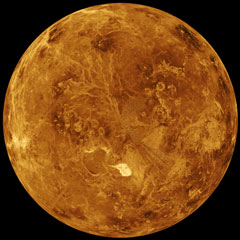
Venus is the hottest planet in our Solar System. On Earth, places near the equator are much warmer than places near the poles. On Venus, it is really hot everywhere... even at the North and South Poles.
...more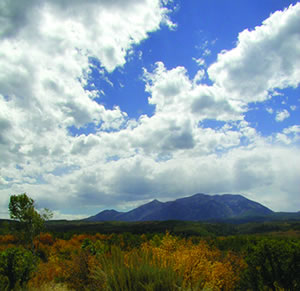
Clouds can come in all sizes and shapes, and can form near the ground or high in the atmosphere. Clouds are groups of tiny water droplets or ice crystals in the sky and are formed by different processes.
...more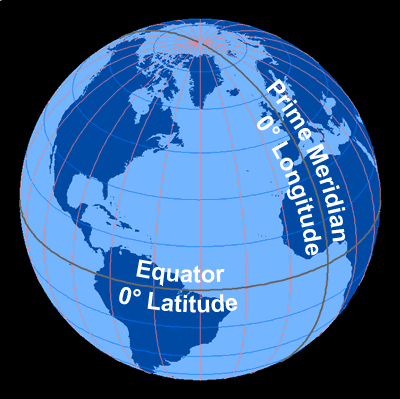
The most common way to locate points on the surface of the Earth is by standard, geographic coordinates called latitude and longitude. These coordinates are measured in degrees and represent angular distances
...more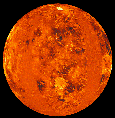
Venus is the second planet from the Sun, and is Earth's closest neighbor in the solar system. Venus is the brightest object in the sky after the Sun and the Moon, and sometimes looks like a bright star
...more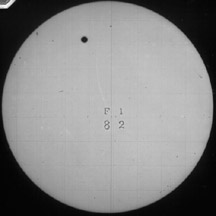
Sometimes Venus passes between Earth and the Sun. This event is called a transit of Venus. Transits of Venus don't happen very often. There is a pattern in the time between transits of Venus. The pattern
...more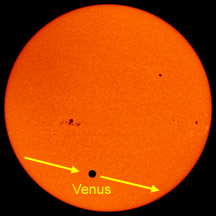
Sometimes the planet Venus gets between Earth and the Sun. Astronomers call that a "transit" of Venus. A transit is a little bit like an eclipse of the Sun, when the Moon gets between Earth and the Sun.
...more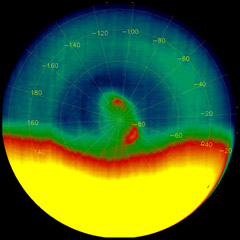
A vortex is a swirling, circular movement of air and clouds... like in a tornado or hurricane. The plural form of vortex is "vortices". The planet Venus has vortices in its atmosphere above each of its
...more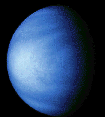
The following may be the history of Venus. Venus formed about 4 Billion Years ago. at the conclusion of forming it continued to be bombarded with leftover material. Many planets still bear the remains
...more














